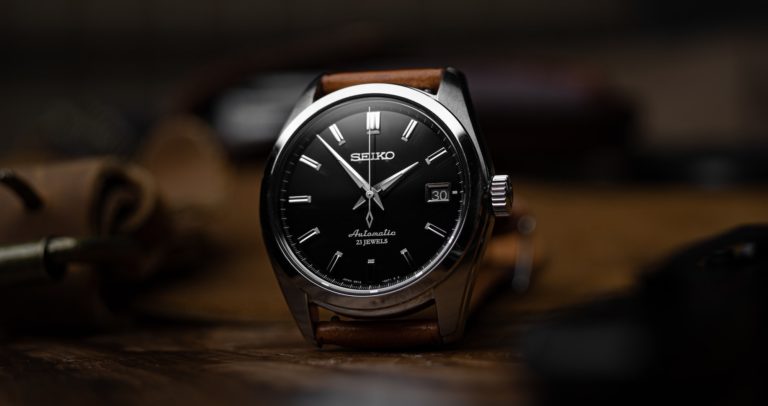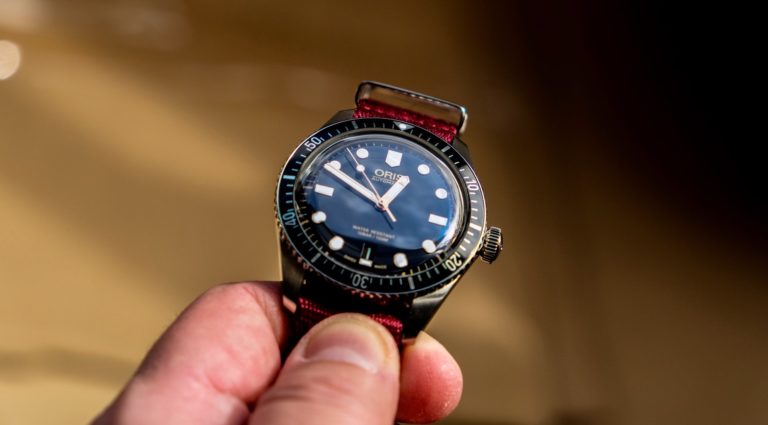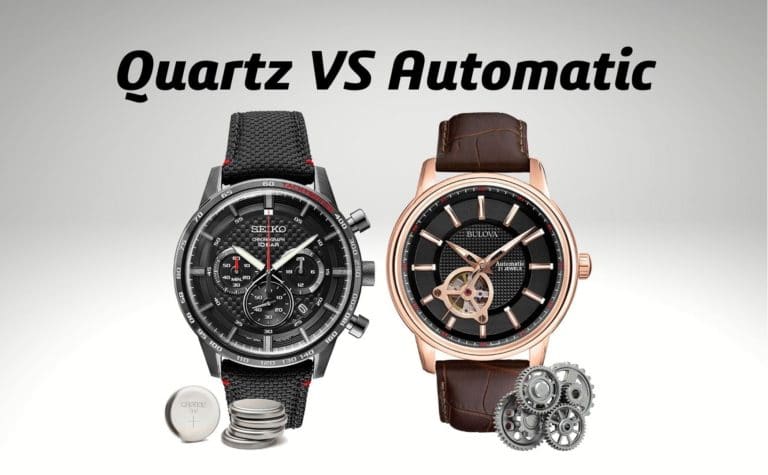Affiliate Disclosure: As an Amazon Associate I earn from qualifying purchases. Details
Automatic watches are popular types of wristwear that every respectable watch manufacturer has in their line-up. They are complex, prestigious, and highly appreciated by watch aficionados.
For instance, Rolex, the most famous brand, don’t produce any quartz timepieces – all are automatic or manual mechanical movement watches.
But how do automatic watches work? And why are they so sought-after and luxurious?
We will answer these questions and many more in the following guide.
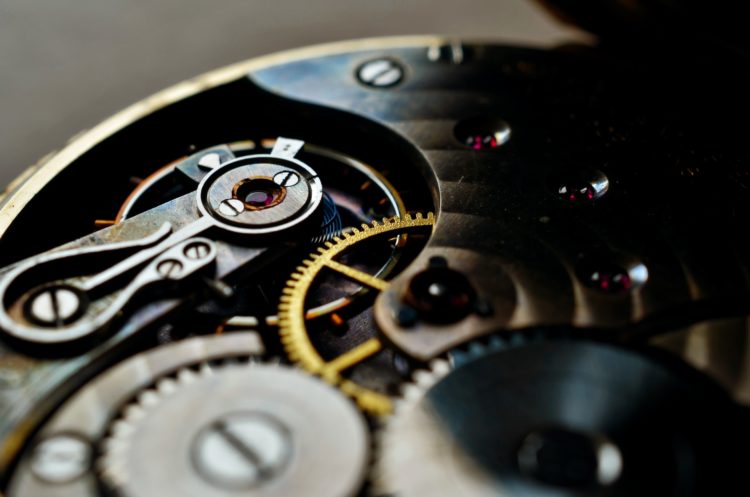
But first of all, let’s clear the conundrum behind the term automatic watch.
What Is an Automatic Watch?
An automatic watch is a timepiece that doesn’t employ batteries for running the mechanism but instead the natural motions of the wearer.
In simple terms – an automatic watch gets wound whenever you move your hand. No batteries or regular manual winding is therefore required.
However, the majority of automatic watches come with a manual winding option, too, despite the existence of a self-winding mechanism. Why is that so?
The reason is quite simple – while an automatic winding will get the watch running and going, it still isn’t enough to fully wind it. Therefore, it requires manual intervention every once in a while to take the maximum out of the power reserve.
Read more: How to wind an automatic watch?
But what is a power reserve, you ask?
A power reserve is a period when an automatic watch runs without any motion applied to it, which is typically 40-50 hours. So, the more often you wear the watch, the less likely it will stop.
Now that the basics of an automatic watch are clear let’s look inside of it and find out how it works.
How Do Automatic Watches Work?
Everything starts from the motions of the wearer. Whenever the wrist moves, a freely spinning rotor at the back of an automatic watch moves as well, creating energy while doing that.
The energy is gradually accumulated into the mainspring, which, in turn, starts a chain reaction.
As a result, the energy moves through multiple gears into the escapement that measures it into equal parts. These equal parts are necessary for the balance wheel to beat back and forth at an unchangeable rate.
Finally, with every beat of a balance wheel, the gears transfer the measured energy in equal parts to the watch hands. And, voila, an automatic watch ticks.
For an even simpler overview, the workings of a self-winding watch can be described in 6 steps:
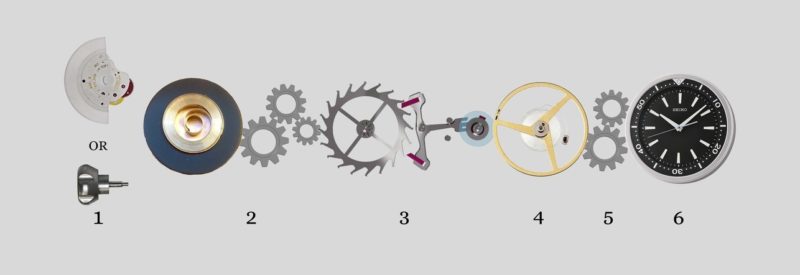
1. The spinning rotor creates energy from the motions of a wrist
2. The mainspring gets wound from the spinning and transfers the energy forward
3. It is received by an escapement that measures it to equal parts
4. Based on these equal parts, the balance wheel beats back and forth
5. The gears transfer the beats to the watch hands
6. The watch hands advance
Easy, right? Not quite.
The fact is that the whole mechanism consists of more than a hundred miniature parts, not only the ones described above. When one of them malfunctions, the whole system malfunctions.
That is why automatic calibers are so appreciated – they are sophisticated, complex, and require skills to manufacture. That is also the reason why they cost more than mass-produced quartz movements.
Difference Between Automatic & Manual Mechanical Watches
An automatic watch is often called a mechanical watch because of the mechanically operating movement it employs. However, not any mechanical watch is an automatic watch.
Complicated? Not really.
There are two types of mechanical watches – one that winds itself automatically (automatic watch) and one that requires manual winding via a crown (manual mechanical watch).
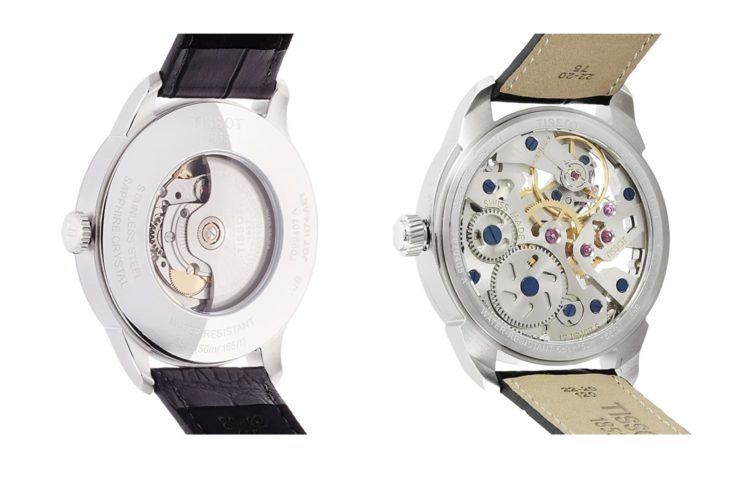
Therefore, an automatic watch is an advanced version of a manual mechanical timepiece due to the addition of a spinning rotor that eliminates the need for constant crown turning to keep the watch running.
Apart from that, they both share the same working principles.
What Will You Get with Automatic Watches?
The way that automatic watches work (and mechanical watches as a whole) offer several extras compared to quartz watches. Also, there are some disadvantages of the mechanism that you should bear in mind.
Sweeping Hand
Visually, the best thing an automatic mechanical watch offers is the sweeping second’s hand.
A typical watch makes 21,600 or 28,800 beats per hour. It is the result of the beats that a balance wheel makes in an hour. Now, dividing these beats by the seconds in an hour (3,600), we get 6 and 8 beats per second, respectively.
It means that an automatic watch takes 6 or 8 steps a second, resulting in a sweeping motion of a second’s hand. Hence, you can easily differentiate a mechanically-driven timepiece from a battery-powered quartz piece by simply checking the movement of the second’s hand.
All the luxury watches have a sweeping second’s hand. Therefore, it’s no wonder automatic timepieces are considered more luxurious than quartz watches.
Exhibition Caseback
Another pleasant addition that most mechanical watches have is an exhibition caseback where the intricate workings of the mechanism are on full display.
From the back of the case, it is possible to see half a circle-shaped spinning rotor, a balance wheel, gears, wheels, and many more miniature parts.
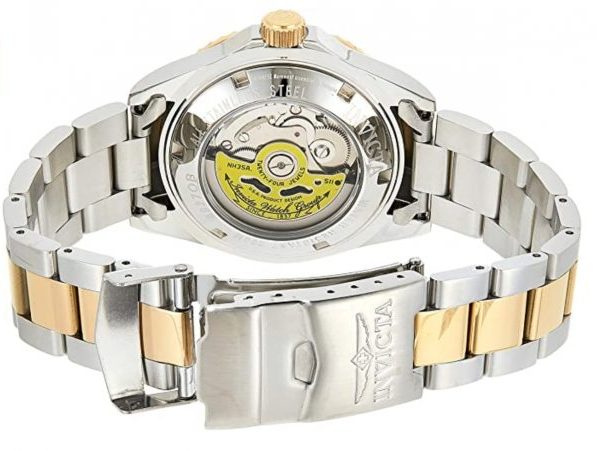
In some cases, the watches even have a small portion of the dial removed, enabling one to peek into the caliber from the front. Such timepieces are called skeleton watches or open-heart watches.
Quartz calibers, on the other hand, are very simple in build and design and hence don’t offer much to be worth displaying.
Power Reserve
Since quartz watches employ batteries, they last a couple of years without any concerns. Automatic watches, on the other hand, conserve energy into the mainspring. As a result of the physical limitations the method has, the amount of time the watch is wound is restricted to no more than a couple of days.
Therefore, the owners of automatic watches have to accept the fact that their timepieces require either constant wearing or regular time setting.
An alternative option is to buy a watch winder. It is a tabletop box that rotates an automatic watch, keeping it wound constantly.
Inconsistent Accuracy
Last but not least, one can’t look past the accuracy of automatic watches.
A typical caliber is accurate to +/- 20 seconds per day. It means it can lose 5 seconds today, 12 seconds tomorrow, and gain 3 seconds the day after tomorrow. In short, the accuracy is unstable, and the deviation is notable.
When comparing the accuracy to a quartz movement, which deviates +/- 15 seconds a month, the automatic caliber is far from being accurate.
Several reasons contribute to the inaccuracy of mechanical timepieces, including temperature fluctuations, magnetism, gravity, and friction. They’re all environmental factors that influence the fragile metal parts inside the movement, and, unfortunately, there’s nothing much you can do about it.
Therefore, you should take automatic watches as they are and appreciate the numerous advantages they possess over quartz watches.
Final Words
An automatic movement is a horological masterclass that consists of more than a hundred parts, requires knowledge to construct, and possesses eye-catching extras. All this leads to the very reason why self-winding watches are so appreciated and luxurious.
The way that automatic watches work, from the spinning rotor at the back of a watch to the balance wheel beating back and forth at a constant rate, shows how thought-out and marvelous the whole mechanism is.
True, automatic watches have some flaws that you have to accept, such as the inconsistent accuracy and short power reserve, which result from environmental factors and physical constraints. However, these are minor problems compared to the overwhelming advantages this complex mechanism offers.
You may also like:
Affiliate Disclosure: As an Amazon Associate I earn from qualifying purchases. Details
- CIGA Design Blue Planet Gilding Watch: The Best Conversation Starter Around? - April 2, 2023
- CIGA Design X-Series Review: The Most Skeleton for the Money? - July 7, 2022
- What Is A Dive Watch? A Complete Guide - May 17, 2022

